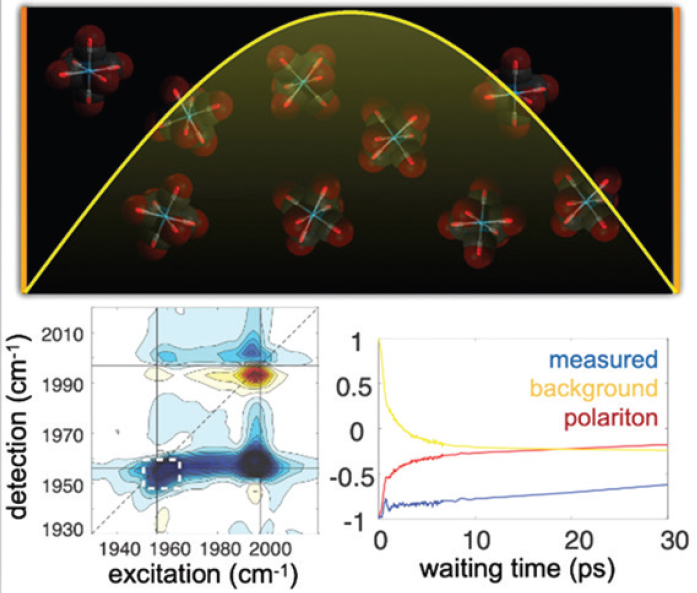
Title: Beyond Qubits: A Quantum Advancement in Error Correction Utilizing Higher-Dimensional Systems
In a revolutionary advancement set to transform the quantum computing landscape, researchers have achieved error correction in quantum systems that move beyond the conventional two-level qubits — exemplifying a pioneering success for modalities with three (qutrits) and four dimensions (ququarts). This achievement, orchestrated by a team from Yale University, including researchers Benjamin Brock, Shraddha Singh, and Michel Devoret, was recently documented in Nature and signifies a pivotal progression towards the realization of usable and scalable quantum technologies.
The essence of this breakthrough is anchored in the effective creation and protective measures for higher-dimensional quantum states against environmental interference — a persistently challenging hurdle in quantum computing. Significantly, the researchers have exceeded the so-called “break-even” point, a threshold where error correction methods provide a net benefit by securing quantum information more reliably than their absence would allow.
Comprehending the Breakthrough: Transitioning from Bits to Qudits
Classical computing operates with bits, which can represent values of 0 or 1. In a similar vein, modern quantum computers predominantly utilize qubits — quantum bits that can take on states of 0, 1, or a superposition of both. Nonetheless, numerous physical systems designed for qubits — like superconducting circuits — can tap into more than two energy levels.
This expansion opens up opportunities to utilize “qudits” (quantum digits), which have the ability to exist in various states simultaneously. For instance, a qutrit possesses three levels (0, 1, and 2), while a ququart contains four (0, 1, 2, and 3). Leveraging these multi-level systems could enhance quantum computations, encoding a greater amount of information within fewer physical units and facilitating advanced processing methodologies.
“Utilizing these qudits could allow for more efficient extraction of magic states, gate synthesis, algorithm compilation, and the simulation of high-dimensional quantum systems,” the research team detailed in their publication.
The Challenge: Noise and Error Correction
The allure of qudits lies in their heightened complexity and information capacity, yet this also renders them vulnerable to errors induced by external noise and imperfect control. The challenge escalates when aiming to rectify these errors; the strategies effective for qubits do not seamlessly apply to qudits, particularly as quantum states must evolve over time while maintaining stability.
To confront these challenges, the Yale team adopted a robust approach: implementing higher-dimensional error correction codes through a bosonic coding technique known as the Gottesman-Kitaev-Preskill (GKP) code. This strategy employs a harmonic oscillator — a quantum mechanism adept at representing extensive Hilbert spaces — as the groundwork for encoding and safeguarding quantum information.
The Device and Technique
The experimental setup that enabled this breakthrough integrated a tantalum transmon (a kind of superconducting qubit) with a 3D microwave cavity. This cavity contained an oscillator mode employed to retain quantum information in logical GKP states, while the transmon acted as a control unit — serving as an ancilla (assistive) qubit utilized for error detection and correction.
To meet their objectives, the researchers devised innovative techniques comprising:
– A generalized “small-big-small” (SBS) protocol applicable for encoding and safeguarding higher-dimensional qudits.
– Measurement strategies employing solely binary (qubit-level) readouts to assess the more intricate qudit states.
– Optimized error correction procedures bolstered through reinforcement learning, allowing the system to adapt strategies effectively.
Achieving the Break-Even Point — and Beyond
In quantum computing, the “break-even” point represents a significant benchmark. It denotes the stage at which the introduction of error correction becomes advantageous — implying that the corrected quantum state endures longer and exhibits greater reliability than without error correction.
The researchers not only reached this pivotal threshold but also recorded an average quantum error correction (QEC) improvement of approximately 1.8 across their trials — a result consistent for both 3D and 4D qudit systems.
This result was especially remarkable considering the intrinsic difficulties associated with managing more complex states, which are usually more vulnerable to specific types of noise. The principal sources of logical errors recognized were:
– Transmon bit flips (which diminished with escalating dimensions),
– Photon loss in the oscillator cavity (which increased with dimension),
– Cavity dephasing (the predominant noise type, which also rose with dimension).
Despite the heightened complexity and vulnerability, their strategies scaled effectively, indicating the resilience of their error correction framework.
Implications and Applications
Corrected qudits hold the potential to unlock various promising avenues for quantum technology:
1. Enhanced Quantum Algorithms:
Since qudits can convey more information than qubits, fewer physical systems might be necessary to execute identical computations — lowering hardware expenses and boosting efficiency.
2. Quantum Communication and Networking:
Higher-dimensional systems offer new possibilities for encoding and transmitting data through secure quantum channels, potentially leading to enhanced